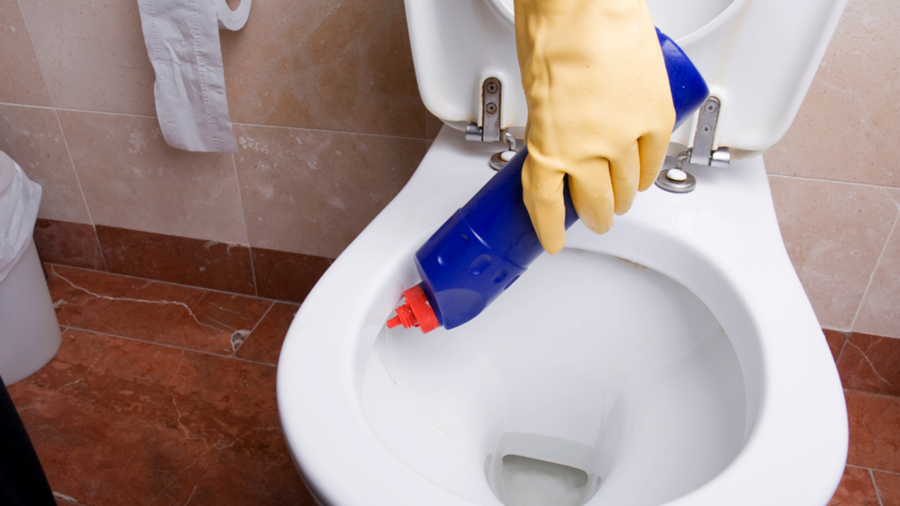Keeping a toilet seat clean is not just about appearances it’s about hygiene, health, and overall cleanliness in the bathroom. In this guide, we share expert-approved methods and insider tips for how to clean a toilet seat effectively and efficiently. Whether you’re deep cleaning at home or maintaining a public restroom, this comprehensive tutorial will cover all you need.
Why Cleaning a Toilet Seat Matters
The toilet seat is a high-contact surface prone to harboring bacteria, viruses, and fungi. Common contaminants include E. coli, staphylococcus, and norovirus, which can cause infections if not properly managed. Regular cleaning significantly reduces these risks, maintains a fresh environment, and extends the life of the toilet.
Supplies You’ll Need to Clean a Toilet Seat
To do the job thoroughly, you need the right tools and products:
Rubber gloves
Disinfectant cleaner or spray
Antibacterial wipes
White vinegar and baking soda (for natural cleaning)
Toilet brush
Soft microfiber cloth or paper towels
Toothbrush (for detailing)
Step-by-Step Instructions for Cleaning a Toilet Seat
Step 1: Preparation and Safety
Before starting, always put on rubber gloves. This protects your skin from harsh chemicals and from coming into direct contact with germs.
Ensure the bathroom is well-ventilated. Open a window or turn on the exhaust fan to avoid inhaling strong chemical fumes.
Step 2: Pre-Cleaning the Toilet Seat
Start by closing the toilet lid and flushing the toilet to remove waste. Then lift the lid and seat to inspect for visible stains or grime.
Use a damp paper towel or cloth to wipe away dust, hair, or loose debris from the seat, hinges, and surrounding area.
Step 3: Applying a Disinfectant Cleaner
Spray a disinfectant cleaner generously on all parts of the toilet seat, including:
The top and bottom of the seat
The lid
The hinges and surrounding hardware
Let the cleaner sit for at least 5–10 minutes to break down grime and kill germs effectively. Do not skip the dwell time—it’s essential for proper disinfection.
Step 4: Scrubbing and Detailing
Using a soft sponge or microfiber cloth, gently scrub all treated areas. For corners, cracks, and hinges, a toothbrush works best to access hard-to-reach spots.
Pay special attention to:
Crevices near the hinges
Underneath the seat
Edge of the lid and seat
Make sure no residue or buildup remains.
Step 5: Rinsing and Drying
Use a clean, damp cloth to wipe away all cleaner and loosened grime. Rinse the cloth often and continue until no chemical residue remains.
Next, dry the entire seat and hinges with a fresh microfiber towel or disposable paper towel to prevent water spots and bacteria growth.
Natural Methods: Cleaning with Vinegar and Baking Soda
If you prefer eco-friendly cleaning solutions, try this natural method:
Mix equal parts white vinegar and water in a spray bottle.
Apply the solution to the toilet seat and let sit for 10 minutes.
Sprinkle baking soda on tough stains and scrub with a toothbrush.
Rinse thoroughly with a damp cloth and dry completely.
Vinegar is naturally antibacterial, and baking soda acts as a mild abrasive to remove tough grime without damaging surfaces.
How Often Should You Clean a Toilet Seat?
For households, clean the toilet seat at least once a week. In high-traffic environments like offices or public restrooms, daily cleaning is ideal.
Disinfect more frequently if someone in the household is sick or if young children are using the bathroom.
Tips for Keeping a Toilet Seat Clean Longer
Close the lid before flushing to prevent bacteria from spreading through aerosol droplets.
Use disinfectant wipes daily for a quick refresh.
Choose anti-bacterial toilet seats for better hygiene.
Regularly check and clean under the hinges to prevent hidden buildup.
Use a toilet seat cover in public restrooms.
What Not to Use on a Toilet Seat
Avoid using:
Abrasive cleaners or scouring pads, which can scratch and damage plastic seats.
Bleach in high concentrations, which can discolor or weaken materials over time.
Hot water, which can warp plastic toilet seats.
Stick to pH-neutral cleaners or diluted vinegar for best long-term results.
How to Deep Clean Toilet Seat Hinges
Hinges often hide grime and are a favorite breeding ground for bacteria. Here's how to deep clean them:
1. If possible, unscrew the seat and remove it from the toilet.
2. Soak the hinges in a solution of warm water and vinegar.
3. Use a small brush to scrub away hidden dirt.
4. Rinse thoroughly and dry before reattaching the seat.
If the hinges are non-removable, use cotton swabs or a toothbrush to clean the tight spots.
How to Remove Yellow Stains from a Toilet Seat
Yellow stains usually form from hard water, urine residue, or aging plastic. To remove them:
1. Apply baking soda paste (mix baking soda with a few drops of water) on the stained area.
2. Let sit for 20 minutes.
3. Scrub with a soft brush or sponge.
4. Rinse and wipe dry.
For tough stains, use a hydrogen peroxide solution and allow it to sit before wiping clean. Always test in a small area first.
When to Replace a Toilet Seat
Despite regular cleaning, all toilet seats have a lifespan. Replace your seat if:
Cracks or chips are visible
It doesn’t fit properly anymore
Discoloration cannot be removed
Hinges are loose or broken
Choose a high-quality, easy-to-clean model made of antibacterial material for the best long-term results.
Conclusion
Maintaining a clean toilet seat is an essential part of bathroom hygiene. By following the detailed steps outlined above, you ensure your toilet stays sanitary, odor-free, and safe for everyone. Whether you use chemical cleaners or natural alternatives, consistency is key.

